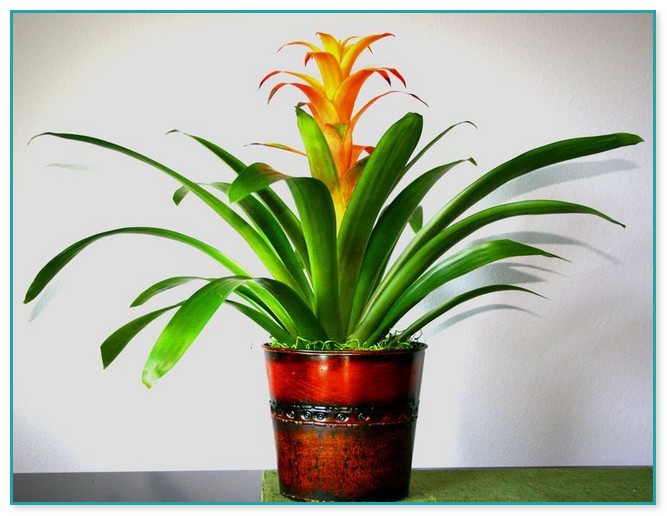Table Of Content
They come from tropical regions around the world where they live under the shade of large trees. That means they don’t need a lot of light, which is perfect since most of us don’t get much sun in our homes anyway. The crown jewel for many a plant lover, monstera plants are known for their wide green leaves bordered with attractive splits. Be sure to give this jungle plant a moss pole or other support to climb on. Give the leaves an occasional rinse in the shower or wipe them with a soft, damp cloth every so often to remove dust buildup.

Rubber Tree
If you find any of these common houseplant pests, begin treating them immediately. When it comes to soil, most tropical houseplants aren’t super picky and they will grow just fine in a general purpose potting mix. Another epiphyte, bromeliads feature elegant, rosette-shaped foliage and bright, colorful blooms that emerge from the center of the plant. Be sure to keep the plant's central cup filled with water rather than watering the growing medium.
Tree Philodendron
With striking dark green arrow-shaped leaves and a fascinating black and white stem, this standout tropical plant is undeniably eye-catching. Originating from the rainforests of southeast Asia, they were prized for their nutritious, starchy rhizomes but found popularity as a house plant in the 1950s in homes. Reaching a height of (50-100cm) over 2 to 5 years, it’s a great plant for making an impact but without taking up too much space. Lipstick plants can bloom on and off all year, though you might want to choose a cultivar especially touted for winter flowering such as A. Give it partial sun, with no direct midday rays, and water it when the surface of its soil looks dry.
Tropical House Plants Epic Growing Guide: Fertilizer Type, transplanting, Life Cycle, Requirements
Inside this rosette, the focal point consists of spiny leaves that can exhibit different shades of pink. But this does not mean that the Silver vase bromeliad does not bloom at all! Its violet-blue flowers are slightly insignificant and show up on the modified leaves of the central rosette. Lovers of humid and warm conditions, Alocasia Zebrina thrive particularly well in steamy kitchens and bathrooms.
34 Easy Low-Light Indoor Plants That Don't Need Much Sun - House Beautiful
34 Easy Low-Light Indoor Plants That Don't Need Much Sun.
Posted: Thu, 25 Apr 2024 07:00:00 GMT [source]
This plant’s sap is poisonous, so keep it out of reach of children and pets. This palm’s fronds may be sharp, so keep it out of reach of children and pets. To troubleshoot your wilting leaves, start with checking the fertilizer. If you’re using too much of it, that could be what’s making the leaves droop.
Tree Fern (Cyatheales)
Baby rubber plant, or pepper face, is an original, playful but also elegant tropical houseplant you can grow indoors. It has very round leaves of the deepest emerald green you can find. Rubber trees have long been popular houseplants due to their lovely, thick, rubbery leaves and adaptability in the home.
Peace Lily (Spathiphyllum).
Orchids are epiphytes, meaning they don't typically grow in soil but on the branches of trees, absorbing nutrients and moisture from the air through their roots. An orchid pot and the proper orchid mix, which includes chunks of bark or lava rocks, will help give your plant's roots the aeration they need. A must-have in every plant collection, the Orchid (Phalaenopsis Spp.) will mesmerize you with its wide variety of unique flower colours. Many beginner gardeners are intimidated by the exotic appearance of Orchids, but these buddies are not as difficult to have around as people think. Unlike most tropical plants which love sunshine, this plant prefers shade.
Peace Lily
The good thing about this plant is that it is drought-tolerant. It is one of the most sought after foliage perennials used commonly as edging on borders and pathways. It can also make for a nice decoration indoor as it can tolerate low light level and dry air.
You might even find yourself stuck in the cycle of buying new plants only for them to fail later on, and I've certainly experienced this. During the winter, tropical plants typically need to be watered less frequently. These plants also benefit from being fertilized every two months during the winter. Tropical house plants are popular for their low light needs and vibrant colors. A variety of plants fall into this category, including the Aloe Vera, Money Tree, Snake Plant, and Swiss Cheese Plant.
5 indoor plants that thrive in moisture - Hindustan Times
5 indoor plants that thrive in moisture.
Posted: Mon, 29 Apr 2024 12:30:04 GMT [source]
Grown indoors, it will likely require some supplemental humidity. It is a heavy feeder and can be fertilized every two weeks without harm. The Alice DuPont variety produces gorgeous, deep pink blooms and grows up to 20’ tall.
Allow its soil to dry out a bit beneath the surface before you water it again. If your plant isn’t blooming, give it long nights (at least 13 hours of total darkness) to encourage it to do so. Just note that it can have sharp spikes, and its white sap can irritate skin and eyes. Strelitzia nicolai is a beautiful, lush tropical plant with white bird of paradise flowers for an even bigger indoor plant. In the wild, they can grow up to 30 feet tall, but confined to a container will be as big as the size of the container allows.
It does need a warm and humid environment, and it requires regular watering. During the growing season, you must maintain the soil moist and you must feed the plant every 2-3 weeks. You can make your mix for this plant if you combine perlite, with bark, coconut coir, worm castings, and horticultural charcoal.
Dragon trees need medium to bright indirect sunlight for growth. This plant’s leaves will start to fall off if it doesn’t get enough light. They can flourish in a wide range of temperatures and can go as much as three weeks between watering because of their drought tolerance. These small houseplants can bloom in low light, but they’ll flourish in medium or bright indirect light.
Their thick leaves act as water reservoirs, so water every 2 weeks or so. Varieties include those with silvery streaks or bright pink variegation, which make them super eye-catching. In general, it’s best to let the soil dry 1-2″ deep before watering again.
Not only is it aesthetically appealing, but tropical plants may also assist in the purification of your air. According to a study by NASA, certain tropical plants can remove up to 87% of volatile organic compounds (VOCs) from the air. Indoor plants can help purify the air in your home and improve your health.
Barbara Pleasant, author of The Complete Houseplant Survival Manual, suggests that you also cut the plant back by about one-third in spring. Peace lilies are on my list of favorite houseplants because they almost talk to you. If they need water, their leaves droop and quickly perk up again once you give them a drink.

No comments:
Post a Comment